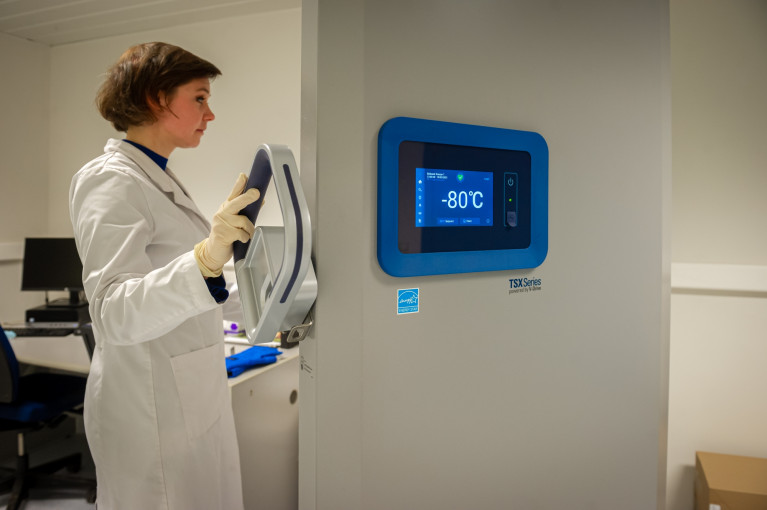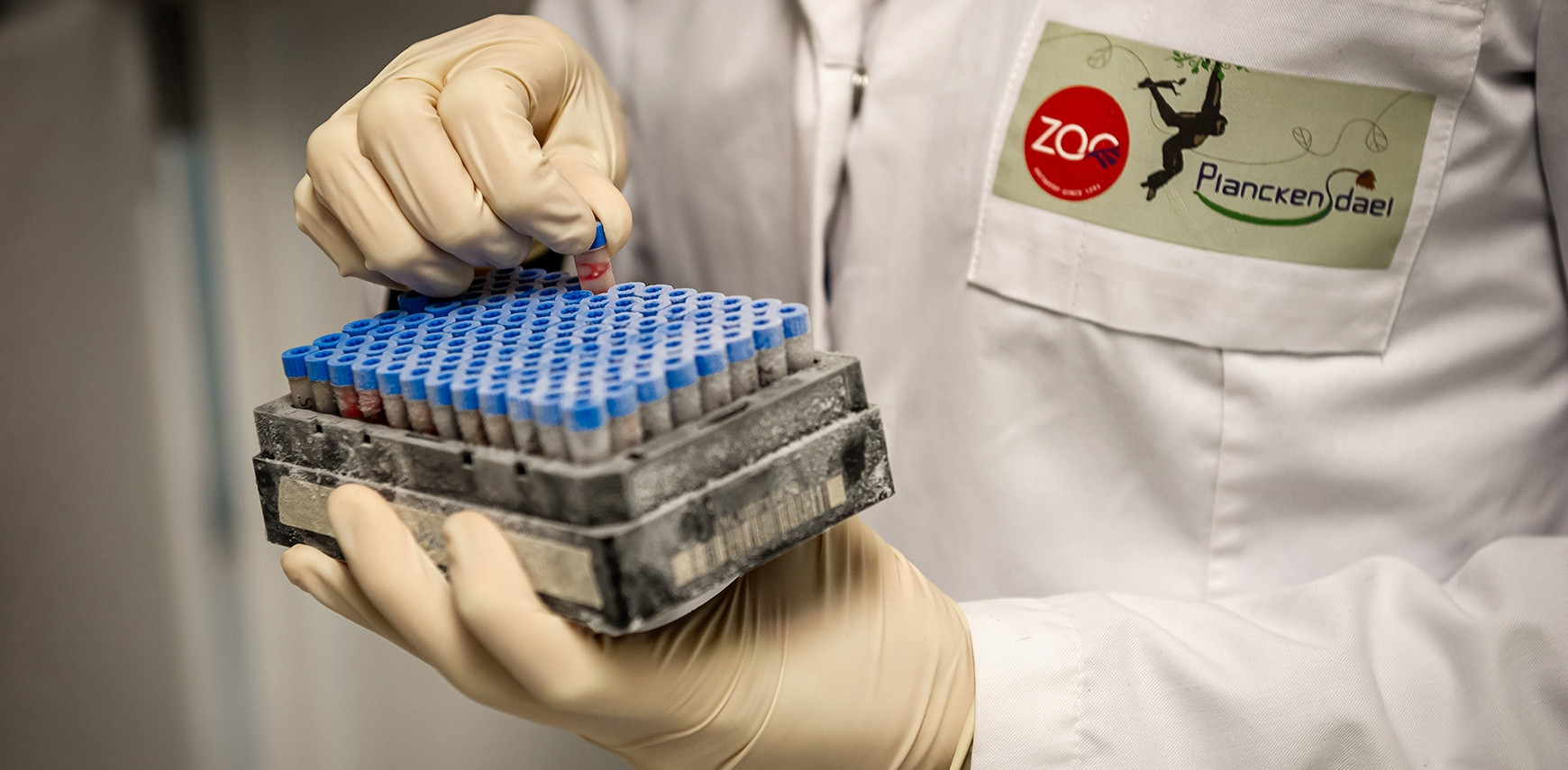Biobank as Backup
ZOO Antwerp has started a special initiative within the European zoo world, namely the development of a centralized Biobank. It collects biological samples from as many individual animals from European zoos as possible. ZOO Antwerp is the co-initiator and, together with the Copenhagen Zoo, pioneer of this Biobank, under the flag of the European Association of Zoos and Aquaria (EAZA).
The EAZA-Biobank consists of a collection of biological samples that are stored in special super freezers with a temperature of -80° Celsius. It was first and foremost founded to enable scientific research for and by zoos. The collected biological samples are used on the one hand for DNA research with the aim of improving the management of zoo populations, and for genetic research that contributes to the conservation of biodiversity. On the other hand, the Biobank was founded to facilitate scientific research by external scientists. ZOO Antwerp thus offers a professional service for European zoos and scientists by collecting samples centrally and in a safe and standardized way and storing them for future use.
BACKGROUND
The success of zoo breeding programmes depends on intensive genetic management of the animal populations we keep in zoos.
Until now, this was done exclusively on the basis of studbooks. These are detailed lists with individual data and lineages of all animals in a population. But those studbook data are incomplete or not 100% correct for many animal species. Because we either lack information, or because we implicitly assume that ancestors - the animals that once came from nature - are not related to each other. In practice, this means that we often overestimate the number of bloodlines and the genetic variation in those populations. Some species also do not lend themselves to individual family tree management (for example species that live in groups), because we often cannot trace family relationships, or because animals are not individually recognizable.
In addition, for many species there is still a lack of clarity about the taxonomy: we are not sure to which (sub) species they belong. In such cases, DNA analyzes can significantly improve our knowledge of the genetic makeup of a population.
HOW DOES THE PROJECT PROCEED?
Why do we need a centralized EAZA Biobank? Biobanks are well-organized collections of biological samples such as blood, serum, tissue, whole specimens - or simply isolated DNA - along with information about the sampled animal. Worldwide there are already millions of such samples stored in different types of collections, such as the Frozen Zoo or the Frozen Ark. Even within individual zoos and aquariums there are initiatives where samples of certain animal species are stored for possible later research. But those collections are not always properly maintained to guarantee the long-term quality of the DNA. Moreover, such collections are often not available for scientific research. Given the growing needs and possibilities for the use of molecular techniques in the management of zoo populations, the EAZA-Biobank offers a professional service to European zoos that are unable or unwilling to properly store samples themselves.
In practice, there are four physical Biobank locations, or so-called "hubs", in Europe. One of these is now in ZOO Antwerp, and also in Edinburgh Zoo, Copenhagen Zoo and the Institute for Zoo and Wildlife Research (IZW) in Berlin. Each of these institutions currently has adequate facilities and expert staff and will provide funding and staff time to preserve, manage and record samples from all individuals sampled in EAZA programs. EAZA encourages zoos and aquariums to collect samples from the individual animals in their collections, for example during routine veterinary interventions or treatment. The samples are then preferably sent to one of the Biobank locations for long-term storage.

HOW DOES THE PROJECT HAVE IMPACT?
The samples themselves are available for genetic analyses that should primarily benefit the improvement of the management of the breeding programmes. DNA research significantly improves our knowledge of the genetic makeup of a population. In combination with studies on natural populations, we gain more insight into the extent to which zoo populations approach the original diversity. This is important, especially in the case of endangered species, because it allows us to determine whether the zoo animals are a genetic backup of the wild population. DNA analysis can also help fill gaps in studbook data, for example by assigning paternity (if you don't know who the father of an animal is) or genetically identifying the origins of ancestors and their relationship.

In addition, the Biobank also creates unique research opportunities for applied and fundamental scientific research of previously unusual or rare animal species. That makes this collection unique. This, together with recent developments and decreasing costs of genetic research, creates new possibilities to further unravel unsolved questions about evolutionary and biochemical processes.
The EAZA-Biobanking Working Group, which represents representatives of the four Biobank hubs and other stakeholders, acts as the steering group for the Biobank. The main tasks of this steering group are to further develop the biobank facilities and infrastructure, to provide sampling guidelines, protocols and other relevant documents, and to support EAZA members in collecting, registering, securely storing and shipping the samples. The central registration of the samples is done in the Zoological Information Management System (ZIMS), the online database that most zoos use to register their animals. In this database, zoos can easily obtain an overview of all samples that have been deposited in the EAZA-Biobank. Registration in ZIMS also allows for a direct link between a sample and any other information we have about individual animals available within the EAZA collections. In this way, the ZIMS database offers unlimited possibilities for research and the use of this data in our breeding programmes of European zoos.
ZOO Antwerp is pleased to have taken this step and to create the momentum to move forward. For many animal populations we still have ancestors in our population. Now is the time to collect samples from them.

